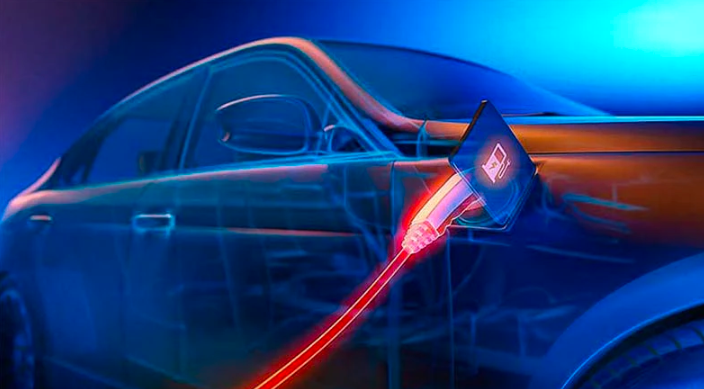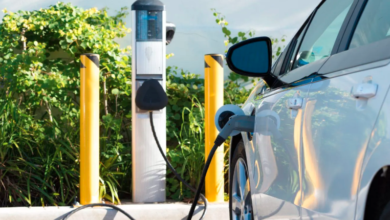Electric Vehicle Boom: Transforming Transportation One Charge at a Time

Once considered a futuristic concept, the electric vehicle is now driving real-world change—redefining how we commute, consume energy, and care for the environment. With governments, automakers, and consumers aligned around the need for sustainable mobility, the electric vehicle has evolved into a practical and popular alternative to traditional gasoline-powered cars.
This article dives into why the electric vehicle is not just a passing trend but a cornerstone of the new automotive era. From cutting-edge technology and climate consciousness to shifting market dynamics and consumer expectations, we explore what makes this innovation essential in today’s world.
The Electric Vehicle Explained: More Than Just a Battery on Wheels
Unlike conventional internal combustion engine (ICE) vehicles, EVs have no tailpipe emissions, making them a cleaner choice for the environment. There are three primary types of EVs:
- Battery Electric Vehicle (BEV): Fully electric with no gas engine.
- Plug-in Hybrid Electric Vehicle (PHEV): Combines electric power with a backup gas engine.
- Hybrid Electric Vehicle (HEV): Uses a gas engine supplemented by an electric motor, without plug-in capability.
Among these, BEVs are leading the surge in global popularity due to advancements in battery technology and growing infrastructure support.
See also: The Booming Business of Baking Supplies in E-Commerce: A Recipe for Online Success
Why the World Is Embracing the Electric Vehicle
🌍 Environmental Responsibility
As the climate crisis intensifies, switching to an electric vehicle is a tangible step toward lowering greenhouse gas emissions. Transportation accounts for nearly a quarter of global CO2 output. By replacing fossil-fueled cars with EVs, nations can drastically cut pollution, especially in urban centers where smog is a daily problem.
🔋 Technological Advancements
Modern electric vehicles are packed with intelligent features. From regenerative braking and energy-efficient drivetrains to real-time data analytics and autonomous driving capabilities, the EV isn’t just a car—it’s a smart machine. Battery efficiency continues to improve, with solid-state battery research promising lighter, faster-charging, and longer-lasting power.
🚗 Driving Experience
Plus, with fewer moving parts, EVs have fewer maintenance issues, saving drivers time and money.
🏷️ Cost Efficiency
While the upfront cost of an electric vehicle can still be high, operational savings quickly close the gap. EV owners benefit from lower fuel costs, minimal servicing needs, and government rebates, tax incentives, and exemption from road taxes or congestion charges in many countries.
Electric Vehicle Adoption Around the World
Global EV sales are skyrocketing. In markets like Norway, electric vehicles make up over 80% of new car sales. The United States, with major support from the Biden administration, is expanding charging infrastructure and incentivizing consumers.
Even in developing economies, the electric vehicle is becoming more accessible due to local manufacturing and affordability-focused models. India, Southeast Asia, and parts of Africa are witnessing rapid deployment of electric two-wheelers, tuk-tuks, and compact EVs suited to their unique urban ecosystems.
The Power Behind the Wheel: Charging and Infrastructure
One of the most important aspects of EV adoption is the development of a reliable charging network.
⚡ Types of Charging:
- Level 1 (Home outlet): Slowest, ideal for overnight charging.
- Level 2 (240V): Found in homes and workplaces; charges in a few hours.
- DC Fast Charging: Powers EVs up to 80% in 30 minutes; essential for road trips.
Companies like Tesla (Superchargers), Ionity, ChargePoint, and Shell Recharge are building massive charging ecosystems. Some cities even provide wireless and solar-powered charging as pilots for the next generation of EV infrastructure.
Overcoming Challenges: What’s Holding the Industry Back?
While momentum is strong, certain hurdles remain:
🔋 Battery Constraints
Manufacturers are investing in recycling and alternative chemistries, but progress takes time.
🧭 Range Anxiety
Although newer EVs offer ranges of over 400–500 km per charge, some consumers still fear being stranded. Education, infrastructure expansion, and tech improvements are solving this concern gradually.
💸 High Purchase Price
Although costs are dropping, EVs remain more expensive than comparable ICE vehicles in many markets. Incentives and economies of scale are expected to bridge this gap in the near future.
⚡ Grid Dependency
The widespread adoption of electric vehicles places added pressure on national power grids. Smart charging, renewable energy integration, and energy storage solutions are being developed to meet future demand.
Consumer Mindset: A Shift in Priorities
The electric vehicle offers a powerful story of sustainability, smart living, and forward-thinking design. Buyers are increasingly drawn to brands that represent climate responsibility and innovation.
Marketing efforts are also evolving. Instead of highlighting engine size or horsepower, campaigns focus on clean energy, connectivity, and purpose. It’s about showing drivers they’re part of something bigger.
Conclusion: Electric Vehicle Is Not the Future, It’s the Now
The electric vehicle is no longer an experiment. It’s a proven solution to pressing environmental challenges and a gateway to technological evolution. With expanding infrastructure, growing consumer demand, and unrelenting innovation, the EV movement is accelerating faster than ever.
Whether you’re a consumer considering your next ride, a business exploring green logistics, or a policymaker crafting sustainable cities, the electric vehicle deserves a seat at the table.
This isn’t just about cars. It’s about reshaping the way the world moves.

